The Rokinon 135mm F/2 was Built for Astrophotography

In this post, I’ll explain why I think the Rokinon 135mm F/2 is the perfect addition to an arsenal of astrophotography lenses.
Deep-sky astrophotography is often associated with a camera and telescope, but the truth is there are a lot of great camera lenses for astrophotography out there. In the past, I’ve covered a number of different lenses, from the Sigma 24mm F/1.4 to the Canon EF 300mm F/4L.
As you know, camera lenses come in varying focal lengths, apertures, and optical quality. Astrophotography is one of the ultimate tests of lens quality, as long exposure photography of deep-sky objects in space can highlight issues that are hidden during daytime photography.
In this post, I’ll share my results using an affordable prime telephoto lens for astrophotography, the Rokinon 135mm F/2.0 ED UMC. The version I have has the mount for Canon EOS camera bodies, but there are several different lens mounts available on Amazon.
My Canon EOS 60Da with the Rokinon 135mm F/2.0 mounted to a Fornax Mounts LighTrack II.
This lens is available for several camera mounts, including Nikon, Sony, Pentax, Samsung, and Fuji. I purchased this lens for the purposes of wide-field deep-sky astrophotography from my light-polluted backyard (shown below), and when traveling to a dark sky site.
Taking images at this focal length from the city will swell issues with gradients, especially when shooting towards the “light dome”. For this reason, a combination of a good light pollution filter, and the use of flat calibration frames are recommended. Before I go any further, I’d like to share a photo from Gabriel Millou of the Andromeda Galaxy using a Canon 1300D.
The Andromeda Galaxy using the Rokinon 135mm F/2.0 ED UMC lens.
To see even more example photos using the Rokinon 135mm lens (or Samyang branded version), go ahead a perform a search on Astrobin or Flickr, with the appropriate filter. I think you’ll find that this lens is behind some of the most amazing wide-field astrophotography images online!
The Rokinon 135mm F/2 ED UMC
The full name of this lens is the Rokinon 135mm F/2 ED UMC, with “ED” standing for extra-low dispersion, and UMC referring to the “ultra multi-coated” optics. This is a fully manual lens, meaning that it does not have autofocus, and you must manually select the f-stop using the aperture ring at the base of the lens.
Manually focusing a lens for astrophotography is nothing new, but the manual aperture ring adjustments may feel a little strange at first.
Rokinon lenses are made in Korea, and so is the Samyang variation. The full extent of the relationship between Rokinon and Samyang is unknown to me, but the packaging on my lens says “Technology by Samyang Optics”. I typically shoot with Canon lenses, but the potential for low light photography (whether that’s astrophotography or the ability to film at dusk) caught my interest.
The diameter of the lens is 77mm, with a non-rotating filter mount on the objective lens. The lens hood is removable (and reversible), which makes packing the Rokinon 135mm away into the included lens pouch possible. The presentation and hands-on look and feel of the 135mm F/2 lens is impressive considering the reasonable price of this lens.
The aperture range of this lens is F/2 to F/22, with 9 diaphragm blades (aperture blades) that work in harmony to set your f-stop. The aperture ring is marked with each f-stop, and you need to manually click through F/2 – F/22 and watch the blades do their work. It’s actually kind of neat to watch!
I ordered this lens on Amazon, utilizing my Amazon Prime membership. The lens arrived next day, less than 24 hours after I hit the order button. The lens came in a handsome box, with core specifications and a lens construction diagram printed on the side. The Rokinon 135mm F/2.0 includes a lens hood, lens pouch, front and rear lens caps, and a 1-year Rokinon manufacturer warranty.
First Impressions
Overall, the lens feels very solid and well constructed. The finish and texture of the Rokinon 135mm F/2 is a step up from the 14mm F/2.8 I ordered a few years ago.
The spec sheet for the Rokinon 135mm F/2 boasts a number of qualities, with the ones listed below being the most important when it comes to night photography and astro. Based on my handful of experiences with this lens in the backyard, I have found these traits to hold true.
- Low-Light Performance
- Low Chromatic Aberration
- Low Flare and Ghosting
The image below highlights the creative freedom this lens provides. To fit the Heart and Soul Nebulae in a single frame requires an extremely wide field of view (compared to the magnification of most telescopes). The 135mm focal length is absolutely perfect for the Heart and Soul Nebulae if you’re using a crop sensor DSLR camera.
The image shown below covers 4.96 x 5.98 degrees in the constellation Cassiopeia. The images were collected using a Canon EOS Rebel T3i camera riding on a Fornax Mounts LighTrack II.
The Heart and Soul Nebulae captured using a DSLR and the Rokinon 135mm lens.
The Rokinon website lists this lens as being useful for portraiture photography, and most telephoto applications. The shallow depth of field present at its maximum aperture does indeed create a pleasing bokeh.
The lens hood is not petal-shaped, which is great news for those using this lens for astrophotography. The flat lens hood design allows you to easily take flat frames with the Rokinon 135mm using the white t-shirt method or using a flat panel.
I should mention that I have only tested this full-frame lens using my astrophotography DSLR’s, all of which are crop-sensor camera bodies. This creates an effective focal length of roughly 200mm, a useful magnification for a wide variety of astro-imaging scenarios.
I am no stranger to the full manual control of this lens, for both aperture and focus. The Rokinon 14mm F/2.8 was the first lens I had ever used like this, and these aspects do not hinder the astrophotography experience whatsoever.
A Full Frame, Prime Lens
The Rokinon 135mm F2.0 is considered to be a full-frame lens because it can accommodate a full-frame image sensor with its 18.8-degree angle of view. In this review, however, I am using the lens on a crop sensor (APS-C) Canon EOS 60Da, which puts the field of view at 12.4 degrees.
“Prime” means that this lens is fixed at 135mm, it is not a zoom lens that allows for focal length adjustments. Prime lenses are typically lighter as they do not need the additional glass and mechanics required to zoom at varying magnifications.
Generally, prime lenses have a reputation for being slightly sharper, and I have found that to be true whether I am shooting a nebula or a Scarlet Tanager.
The optical design includes one extra-low dispersion (ED) lens element to control chromatic aberration, and “ultra multi-coatings” (UMC) to both improve light transmission and reduce flare.
The flat lens hood is great for taking flat frames after a night of astrophotography.
Low Light Capabilities at F/2.0
The F/2.0 maximum aperture of the Rokinon 135mm lens offers a chance to collect a serious amount of signal in a single shot. This allows for less aggressive camera settings for night photography such as using a lower ISO setting and shorter exposure.
Of course, when it comes to astrophotography, this can create some challenges as well. Focusing a “wide open” F/2 lens is demanding of the optics, especially on a field of stars in the night sky.
One way to combat potential soft images and chasing perfect focus all night is to stop the lens down to F/2.8 or even F/4. Your images have a chance at remaining sharper once critical focus has been achieved, but now you have lost the extra light-gathering power you wanted. It’s a trade-off, and one that seems to surface time and time again in this hobby.
Although typically unused in astrophotography, I did get a chance to see the beautiful bokeh this lens creates when shooting at F/2. The aesthetic quality of the blur in the out-of-focus parts of the image are buttery smooth and soft.
What I Really Like
Although this lens feels solid, it is rather light when compared to a telescope. When coupled with my Canon DSLR camera, the entire system weighs just over 3 pounds. That means that it doesn’t require a robust equatorial telescope mount as a larger, heavier telephoto lens would.
A camera tracker (or “star tracker“) is necessary for long exposure deep-sky astrophotography, but a compact model such as the iOptron SkyTracker or Sky-Watcher Star Adventurer will do just fine.
This lens has a long focus adjustment ring, with great tension. The focuser adjustment rotates roughly 270 degrees, meaning fine-tuning on a bright star is more precise. You’ll never have to worry about losing your position just by touching the lens, but you can always tape the position down to be sure.
The Rokinon 135mm F/2.0 ED UMC is one of the most affordable and practical lenses for astrophotography on the market. Sure, the “Nifty 50” is an incredible value (and a LOT cheaper), but the 135mm puts you within range of some of the best astrophotography targets in the night sky.
I’ve spent a handful of nights testing this lens in my Bortle Scale Class 6/7 backyard, and my results live up to the hype it gets in terms of astrophotography performance.
Comparable Lenses (Chart)
| Brand | Focal Length | Maximum Aperture | Price |
|---|---|---|---|
| Canon | 135mm | F/2.0 | $999 (B & H) |
| Nikon | 135mm | F/2.0 | $1,391 (B & H) |
| Sony | 135mm | F/1.8 | $1,898 (B & H) |
| Rokinon | 135mm | F/2.0 | $499 (Amazon) |
Lens Comparison
Over the years, I’ve shot deep-sky targets at varying focal lengths from 50mm to over 1000mm. The closest I’ve been to the 135mm range is 105mm on my Canon 24-105 zoom.
Not only does the Rokinon 135 add additional reach, but I can also now shoot at F/2, instead of F/4 on the Canon. Below, are a few examples of astrophotography images I’ve taken with lenses of varying focal lengths.
As you can see, the magnification of the lens used will dictate the type of projects you shoot.
- The Great Rift of the Milky Way – Rokinon 14mm F/2.8
- Mars meets Pleiades – Canon EF 24-104mm F/4L
- Wide-field Sadr Region – Rokinon 135mm F/2.0
- The Carina Nebula – William Optics RedCat 51
So what’s so great about shooting at 135mm anyway?
The RedCat is deeper at 250mm, and after that, you’re into 300-400mm territory which pulls galaxies and nebulae even closer. Why take a step back from 250 to sit between the RedCat and the 24-105?
It’s all about framing.
Image Scale at 135mm
From the moment I reviewed the first sub-exposure on the display screen of my camera, I feel in love with the mid-range magnification of a 135mm lens. My first shot was a section of the constellation Sagittarius that included the Lagoon Nebula, and Trifid Nebula.
If you want to preview the image field you can expect with a particular camera sensor and lens combination, Stellarium features a useful tool. The Image Sensor Frame tool lets you enter in the size of your camera sensor, and focal length of your lens (or telescope) to display a frame over the star map.
This is a very practical way to plan your next astrophotography project, and especially handy when using a wide field lens like the Rokinon 135mm F/2.
You can use Stellarium to preview the image scale with the 135mm lens and your DSLR.
At 135mm, you can get really creative about the object or objects you shoot and where you position them within the frame.
And because you can shoot between F/2 and F/4, plenty of light reaches the sensor in a relatively short exposure. This has several advantages from less demanding tracking accuracy, to being able to use a lower ISO setting.
The Downsides of this Lens
Now, I have to admit that up to this point, it sounds a little too good to be true. The downsides of this configuration are that shooting wide open can make focusing difficult.
The focuser adjustment ring on the Rokinon 135mm F/2 is excellent, but fine-tuning your critical focus on a bright star at F/2 will take some trial and error to get right. You may need to refocus your subject as the temperature changes throughout the night.
You may need to stop down to control star bloat, and that’s exactly what I’ve done with this 135. I’ve set the f-stop to F/2.8, to sharpen up the stars a bit. In fact, in my test shots, I noticed that the red channel was a little softer than green and blue. To remedy this, I reduced the star size in post, and I started shooting at F/4 to really tighten things up.
Also, as creative as the wide-field 135mm focal length is, it’s not practical for smaller DSO’s and most galaxies. Stick to Andromeda, and skip the Whirlpool.
I have heard others mention that this lens has a “plasticky” build quality, but I believe this aspect has been improved. The model I use feels solid and the barrel is constructed with metal.
The lens is not weather-sealed, so you definitely don’t want to leave your camera and lens (and your tracking mount!) in the rain. There’s no image stabilization on the Rokinon 135mm F/2 either, but that’s a non-issue for amateur astrophotographers.
The North America Nebula captured using the 135mm lens with a clip-in Ha filter.
Recommend Astrophotography Targets for this Lens
Large emission nebulae like the California Nebula (pictured below) are a great choice for this focal length. The image below was captured using a DSLR and 135mm lens on the Sky-Watcher Star Adventurer mount.
The California Nebula. Canon EOS 60Da with the Rokinon 135mm F/2 lens.
I’ve captured a lot of deep-sky astrophotography targets from the northern hemisphere, but I’m usually in too deep to capture an entire region of space at once. Here is a short list of great astrophotography targets to shoot at 135mm with this lens:
- Orion’s Belt (Including the Horsehead Nebula, Orion Nebula, and M78
- The Witch Head Nebula including Rigel in Orion (Careful with star reflection!)
- The Rosette Nebula and Surrounding Nebulosity
- Cygnus, including the North America Nebula and Pelican Nebula
- The Sadr Region in Cygnus including the Crescent Nebula
- The California Nebula in Perseus
- The Blue Horsehead Nebula in Scorpius
- The Rho Ophiuchi Cloud Complex in the constellation Ophiuchus
Below, is an incredible example of the types of projects possible with the Rokinon 135mm F/2.0 lens. The following image was captured by Eric Cauble using the Samyang branded version of this lens.
The Sadr Region in Cygnus, including the Crescent Nebula by Eric Cauble.
Since Eric was so generous to share his images with me, I had to include his photo of the Rho Ophiuchi cloud complex as well. This photo was captured with the Samyang 135mm F/2 lens using a UV/IR cut filter and a QHY168C dedicated astronomy camera.
The Rho Ophiuchi Cloud Complex by Eric Cauble using the Samyang 135mm F/2 lens. See the full-size version on Astrobin.
Final Thoughts
With an effective focal length of roughly 216mm when coupled with a Canon crop sensor body, the field of view is nearly identical to the one you’d find on a full-frame camera with a 200mm telephoto lens. That’s quite a jump from 135mm, so the camera body you use with this lens may change the types of targets you shoot.
I can’t wait to try this lens out during the winter months on some wide-field targets in Orion. The colder temperatures will make DSLR astrophotography much more practical, and there are plenty of great targets to choose from.
During the frigid months of winter, my motivation to spend over an hour setting up my complete deep-sky imaging rig dwindles. However, stepping outside to polar align a small star tracker and attach a DSLR and lens is quick and painless.
In these situations, a portable, wide-field imaging rig wins.
Star parties or dark sky excursions are another great time to use a camera lens in place of the telescope. Not only does it let you travel light, but impressive wide field projects are often more successful when captured under a dark sky.
For those of you that like to “pixel-peep”, have a look at the single image frame captured using the Rokinon 135mm F/2.0 ED UMC at F/4. The image is a 90-second exposure at ISO 400 using a Canon EOS 60Da. The inset picture is a magnified view of the bottom right corner of the frame.
A single, 90-second exposure using the Rokinon 135mm F/2.0 ED UMC at F/4.
I hope that this post has provided some practical insight into a popular camera lens for astrophotography. If experience has taught me anything, it’s that the practical, pain-free equipment that gets the most use under the stars.
This lens is available on Amazon for most camera bodies. Make sure to select your camera mount when checking the price (Check current price). If you have pictures taken using the Rokinon 135mm F/2 lens, please feel free to share your results in the comments section (links to Astrobin, Flickr or your personal gallery are fine).
List of Compatible Cameras (Mounts)
- Canon
- Sony E
- Fuji X
- Nikon AE
- Samsung NX
- Pentax K
- Sony A
- Micro 4/3
Complete Lens Specifications (Canon)
- Model: 135M-C
- MSRP: $599
- UPC: 0-84438-76410-9
- Focal Length: 135mm
- Maximum Aperture: F2.0
- Coverage: Full Frame (FX)
- Optical Construction: 11 Glass elements in 7 Groups
- Aperture Range: F2.0 to F22
- Diaphragm Blades: 9
- Coating: Ultra Multi-Coating
- Minimum Focusing Distance: 2.6ft (0.8m)
- Filter Size: 77mm
- Lens Hood: Removable
- Maximum Diameter: 3.2” (82mm)
- Weight: 29.20oz (830g)
- Length: 4.80” (122.1mm)
Download the User Manual
Helpful Resources:
- Samyang 135mm F/2 ED UMC Review (Camera Labs)
- Does a F/2.0 lens become F/2.8 when used on a crop sensor camera? (Dpreview)
- Use the 500 Rule to find the Perfect Exposure Length for Astrophotography
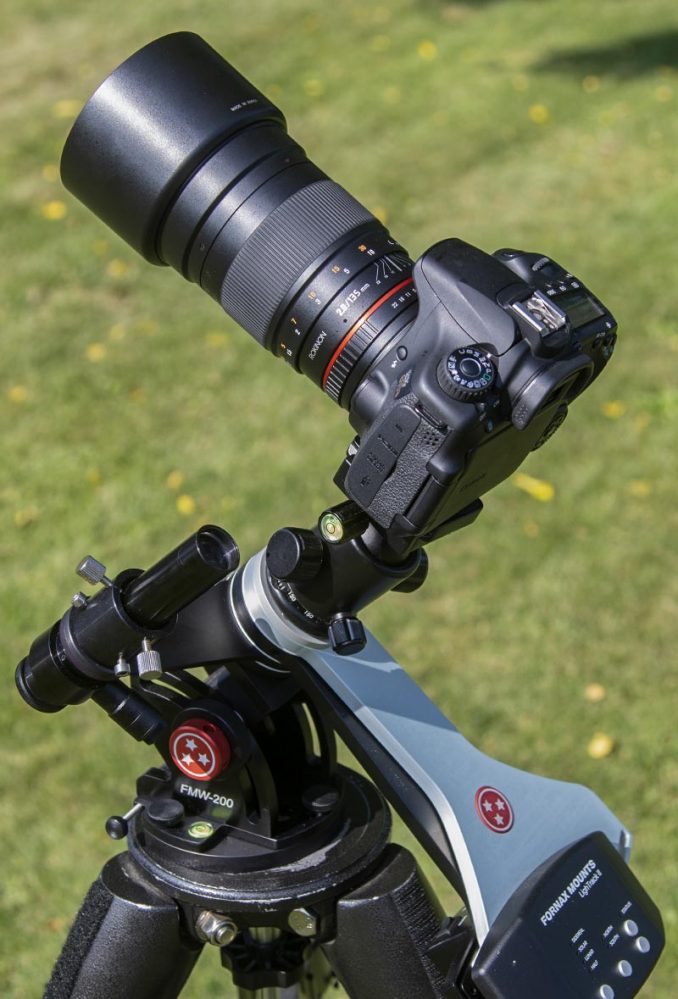



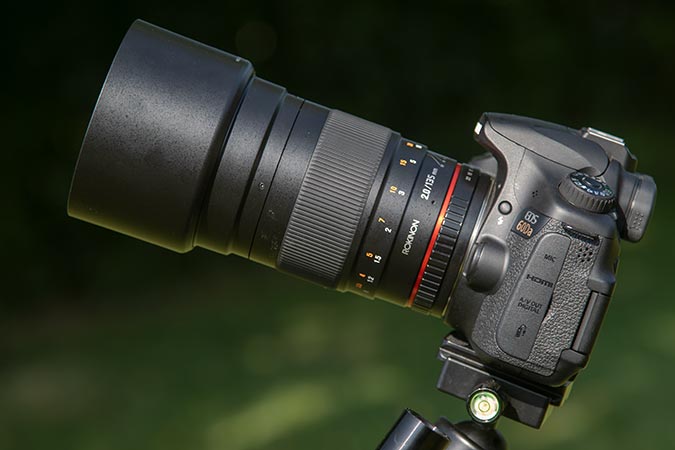
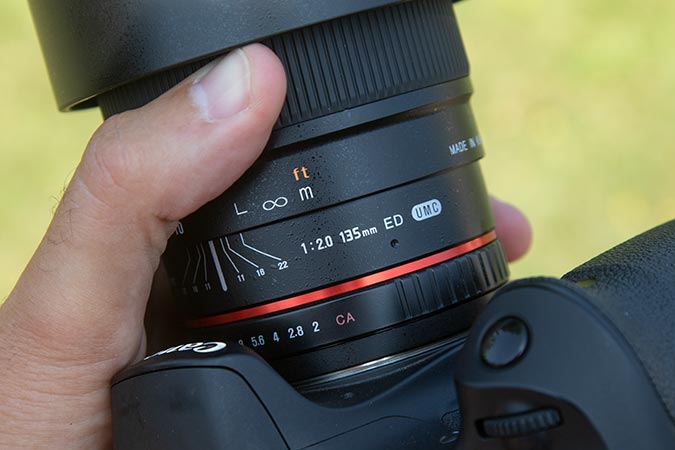
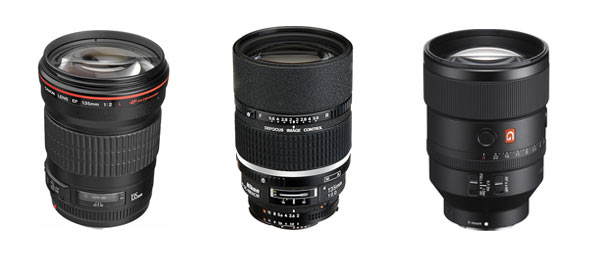
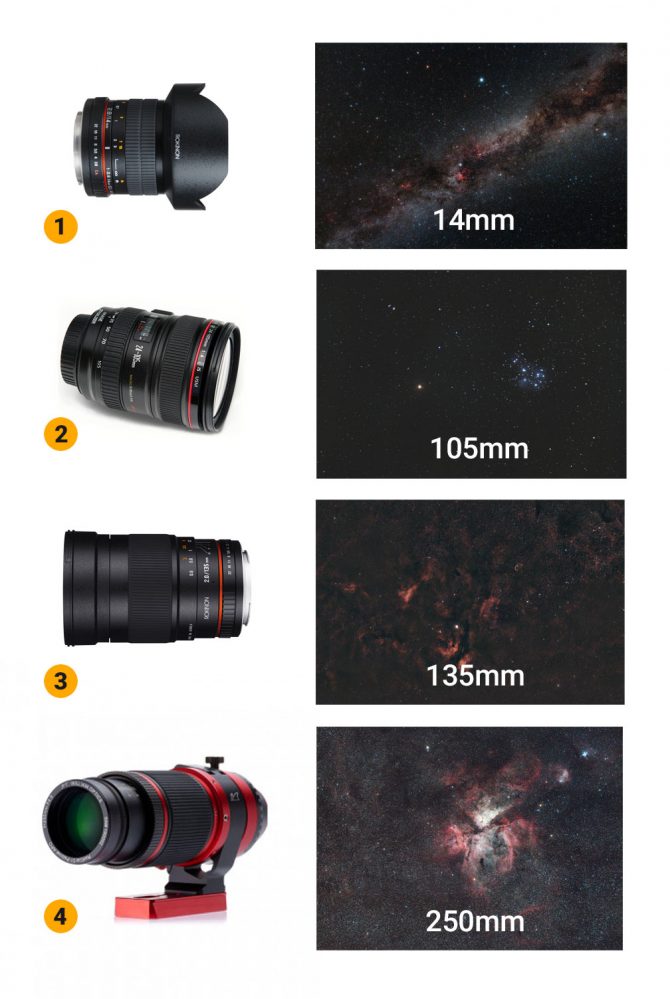



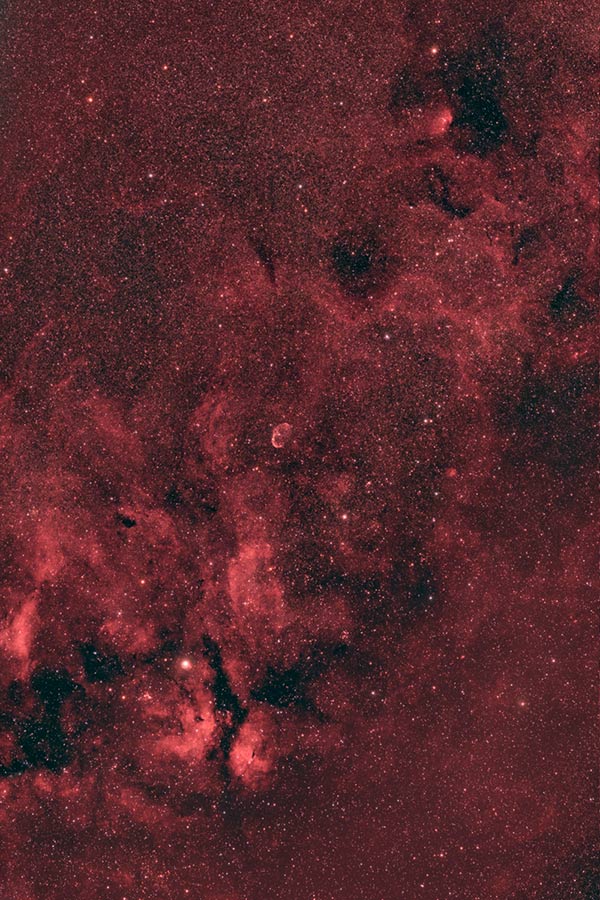

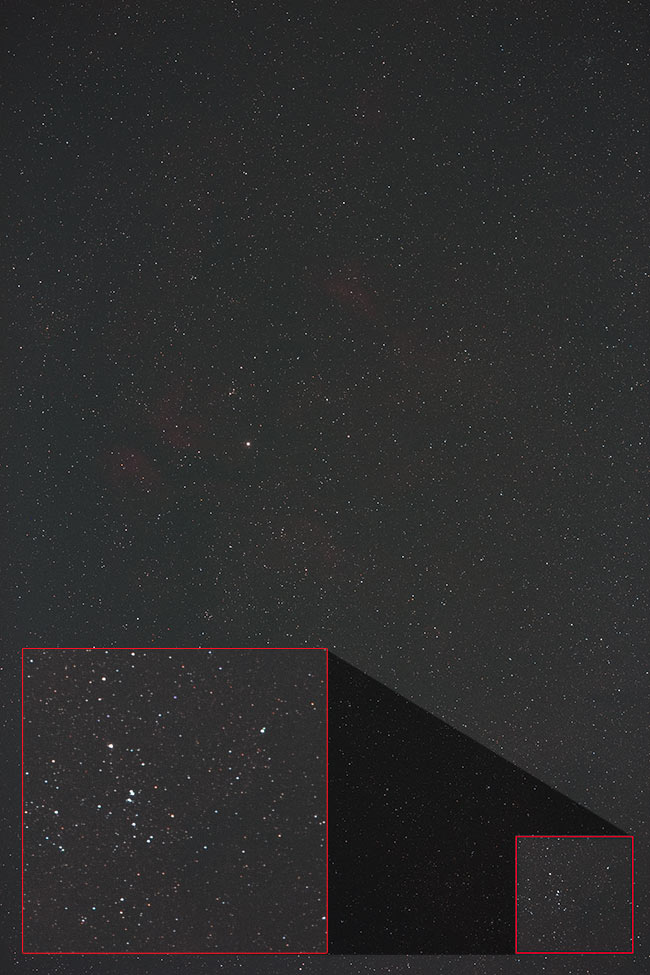


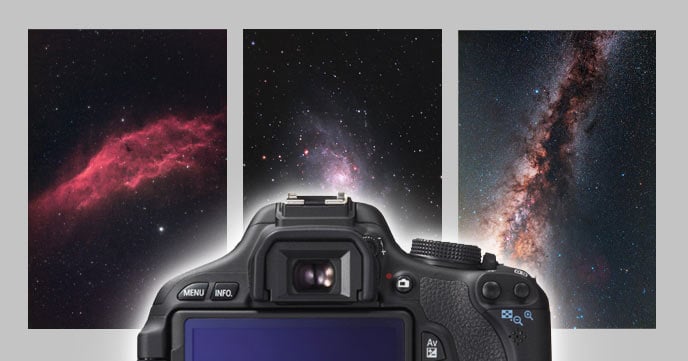
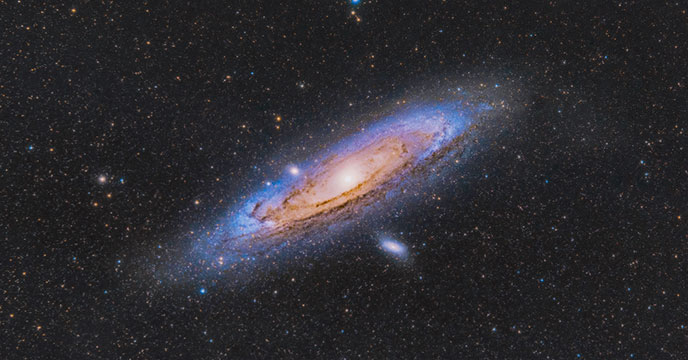
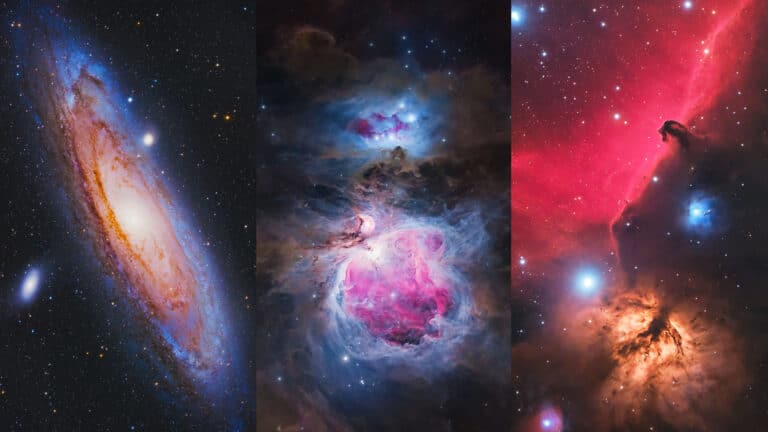
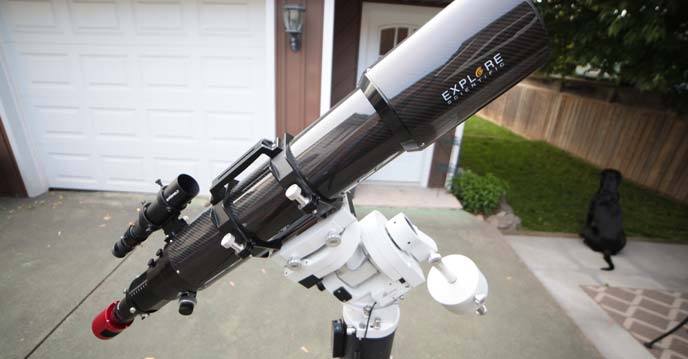

I love the lens for my modified Sony a6000! Does the bright star reflection bother you? I can’t decide whether to clean it up in processing or let it be.
Great question Scott – I think it depends on the image. For some objects a reflection can take away from the photo because it covers interesting details of the object (Think Alnitak in the Horsehead Nebula). Other times, like the Witch Head Nebula, I love seeing the star responsible for the object in all it’s glaring glory!
This looks to be an excellent lens with fantastic results. Definitely now on my to-buy list.
Off topic,
I have a Nikon d 500.
Is this Nikon already, Astro modified, without need for H alpha filters or any further modifications?
Thanks,
Doctp12@aol.com
Hi Thomas – As far as I know, the Nikon D500 is not modified for astrophotography out of the box (it includes a built in IR cut filter that blocks much of the 656nm wavelength). The Nikon D810A, however, is “modified” for astrophotography out of the box. An h-alpha filter would still be useful for your D500, but much more so if it were modified!
Thanks Gary! The clip-in Astronomik 12nm Ha is one of their most popular filters ever – and for good reason!
I’m so new to all of this so thank you for your insightful and educational posts.
In an effort to save money, I’d like to start using a Canon 80D that we already own to start picking targets and imaging. Any experience with this camera and would this lens be a good fit?
Thanks!
Hey, Scott
I’m currently shooting with a Canon 60D. Will I be able to capture the heart nebula with the lens you’re talking about or would I need to modify my camera as well? Also, when shooting the heart nebula, is the sky tracker a must or not required?
Hi Trevor,
I bought this lens after reading your great review for my Nikon D5300.
After the first exposure in M mode, the camera throws an error saying “Error please press the shutter button again”. Also, the lens can only be operated when aperture is set to 22, wondering how I could use F2.
Have you ever come across this phenomena?
Thanks & Cheers
Robert
I don’t mean to be rude, but I fail to see any photographic comparison or test to display the quality of this lens against others, concerning coma or anything else, except considerations on the manual focusing, its shape and ergonomic.
Not rude at all, a fair comment. This is a very popular lens, and I am sure there are a ton of lens test reports for it available online. My goal for this article was to show some great example photos and share some ideas for projects this lens is a good fit for. I will say that at F/4 this lens is extremely sharp corner to corner when used on my 60Da.
Great post; thanks for the detailed information. Perhaps I missed it, but did you use a clip-in light pollution filter with your 60D and this lens? If so, which one?
Dear Trevor,
thank you for that great review and also the explanations. Helps me as a beginner a lot 🙂
This brings me to my question. Since i am totally new in this field, i would like to start with astrophotography but using my existing camera (Fuji XT-30). I already did some trials with the Samyang 12mm lens.
My questions, for deep sky pics, should I get the 135mm lens or the RedCat 51 APO 250mm f/4.9 which you mentioned here as well? Latter looks quite “professional”.. But again i am just at the beginning and i also do not want to use now a telescope.
Thank you in advance
Does this work well with any of the 1.4x / 1.7x / 2.0x Teleconverters (extenders / barlows)?
I have just acquired my astrophotography set up thanks to all your videos and doing some research. The 135mm Rokinon with the Canon Rebel seems like a pretty good setup. I am a complete amateur at photography in general and this is all new to me so thank you for all the information and videos. My first photo of the night sky is of Comet NEOWISE, however I know it’s not the best photo I could capture. I guess that’s where practice will come in handy.
Hey! thanks for the write-up.. i just got this lens and have just been trying it out.
I’m a newbie at astro.. and photography in general really!
I had one question that i can’t seem to find an answer to..
The lens has 14 ‘stops’ when turning the aperture.
The extremes are 2 and 22. There are a total of 8 stops actually written on the lens.
When i check a F stop chart, i see 15 stops if i count the main, and the secondary ones: “2”, 2.4, “2.8”, 3.3, “4”, 4.8, “5.6”, 6.7, “8”, 9.5, “11”, 13, “16”, 19, “22”.
I put quotes around the ones that are written on the lens.
So.. its like there is one F stop not being used by the lens..how do you know what click is for what F stop?? I can’t seem to find this documented anywhere.
When i just judge by the indicator line as i click through, it seems like its 19 that gets skipped… wondering if there is anything more definite?
Thanks!
never mind.. confirmed from others that F19 is indeed the one that is excluded on this lens!
Thanks.. or.. Clear Skies!
Hey Trevor,
I have been following your work both on YT and here from Japan for a while. Thanks to you I got a Rokinon 14mm f2.8 and a 24mm f 1.4 and am considering this lens at the moment, but wonder how it compares to the Canon 135 mm f/2.
Thank you!!
I just got the Samyang version of this lens and used it with my Canon 3ti on a Skywatcher Star Adventurer
https://www.astrobin.com/iedrz2/?nc=user
https://www.astrobin.com/6yp1ar/?nc=user
Would you recommend a collar/support for the lens? I’m getting a samyang to use with my 60D.
I would! Second night out with mine right now and I am here in the comments looking for the part number or link! 😉 It is a heavy lens. Well, for me. I’ve been using kit lenses for the past year, favoring the Nikkor 50mm 2.8. This thing is a beast in comparison.
As a complete beginner in Astrophotography should I buy Rokinon 135mm lens or Canon EF 75-300mm lens with Canon EF 50mm lens?
Hey Trevor, great article! A quick question, I have a Sony a6300 mirrorless camera which is great but the sensor is very close behind the mount. If I got this lens, would it make more sense long term to get the Canon mount with a E mount adaptor so I could fit it more easily to a dedicated astro camera later? Otherwise I might not achieve focus? Thanks, Chris
hi Trevor – my name is sagar – i have same lens but i have one question why lot of stars are appearing in my image which is taken thru rokinon 135mm
Very nice Trevor, I think I’ll have to buy the 135mm!! I like the manual aperture. I have a couple lenses that are automatic that I’d like to use with an asi183mc. do you know if it’s possible to control the aperture with an automatic lens?
This is a trivial comment.
Samyang is a lens manufacturer.
Samyang prints importer company names on their cameras. Rokinon, Bower, Vivitar and some others have Samyang products with their company names on them.
I have a Rokinon 8mm and 14mm they ARE manufactured by Samyang. They are identical except for the name printed on them.
Hi Trevor
You’ve done some amazing shots and I want to thank you for sharing all these details from your journey. It is really helpful for beginners like me.
My name is Alin and I am just starting with astrophotography. I just bought a Nikon P1000 for this purpose, I don’t want to go into deep sky objects just yet (or at least not with P1000). I am thinking on starting “shy” with Milky Way and nightscapes, for now. I still have to buy a tracker tripod, a remote for the P1000, some filters, but my question, at least for now, is what is your opinion on P1000 for this purpose? Have you had the chance of testing it?
Thanks,
Alin
I use my 400mm f/2.8 and 600mm f/4 ED IF AIS Nikkors frequently.